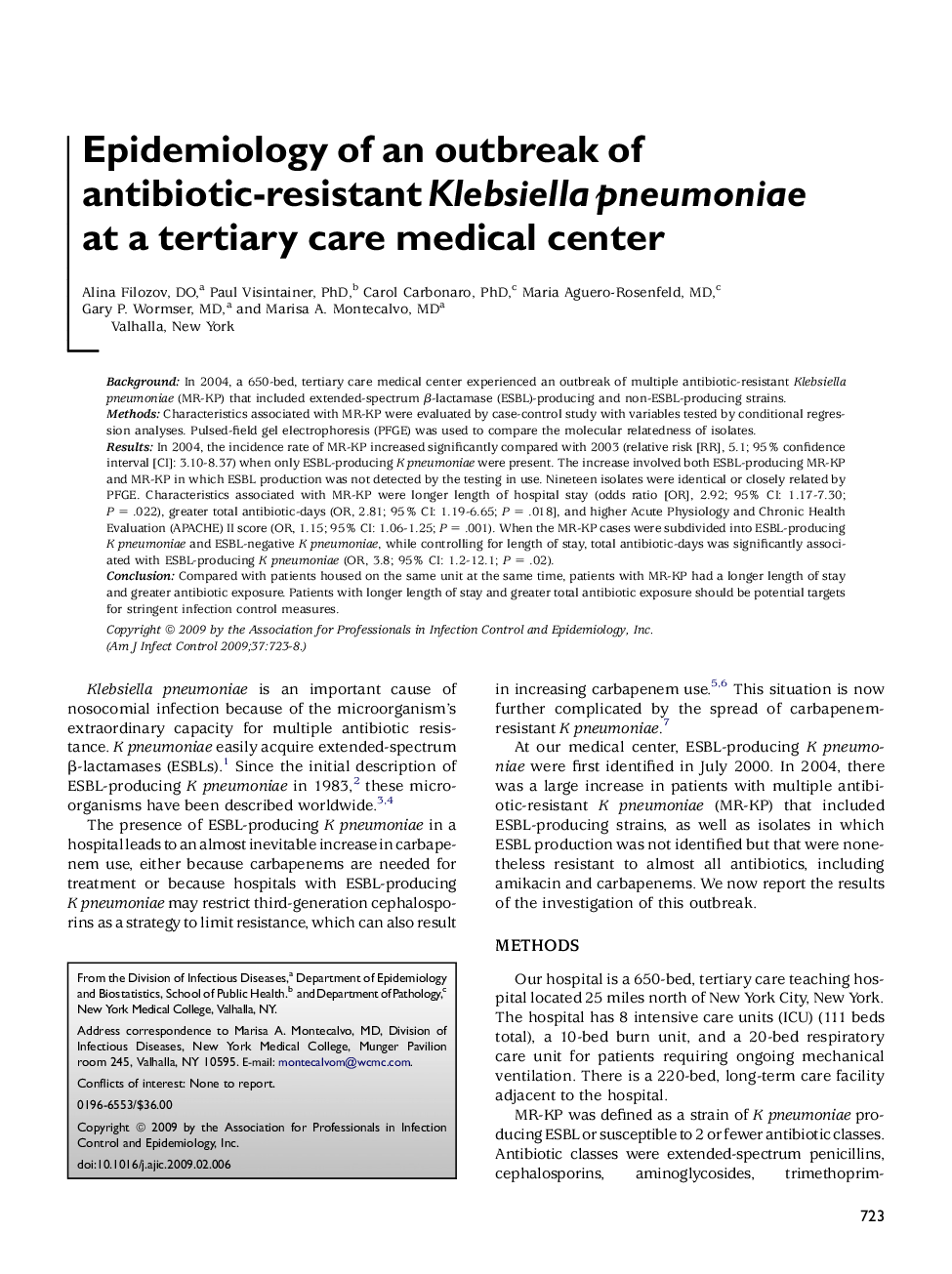| Article ID | Journal | Published Year | Pages | File Type |
|---|---|---|---|---|
| 2640492 | American Journal of Infection Control | 2009 | 6 Pages |
BackgroundIn 2004, a 650-bed, tertiary care medical center experienced an outbreak of multiple antibiotic-resistant Klebsiella pneumoniae (MR-KP) that included extended-spectrum β-lactamase (ESBL)-producing and non-ESBL-producing strains.MethodsCharacteristics associated with MR-KP were evaluated by case-control study with variables tested by conditional regression analyses. Pulsed-field gel electrophoresis (PFGE) was used to compare the molecular relatedness of isolates.ResultsIn 2004, the incidence rate of MR-KP increased significantly compared with 2003 (relative risk [RR], 5.1; 95% confidence interval [CI]: 3.10-8.37) when only ESBL-producing K pneumoniae were present. The increase involved both ESBL-producing MR-KP and MR-KP in which ESBL production was not detected by the testing in use. Nineteen isolates were identical or closely related by PFGE. Characteristics associated with MR-KP were longer length of hospital stay (odds ratio [OR], 2.92; 95% CI: 1.17-7.30; P = .022), greater total antibiotic-days (OR, 2.81; 95% CI: 1.19-6.65; P = .018], and higher Acute Physiology and Chronic Health Evaluation (APACHE) II score (OR, 1.15; 95% CI: 1.06-1.25; P = .001). When the MR-KP cases were subdivided into ESBL-producing K pneumoniae and ESBL-negative K pneumoniae, while controlling for length of stay, total antibiotic-days was significantly associated with ESBL-producing K pneumoniae (OR, 3.8; 95% CI: 1.2-12.1; P = .02).ConclusionCompared with patients housed on the same unit at the same time, patients with MR-KP had a longer length of stay and greater antibiotic exposure. Patients with longer length of stay and greater total antibiotic exposure should be potential targets for stringent infection control measures.
